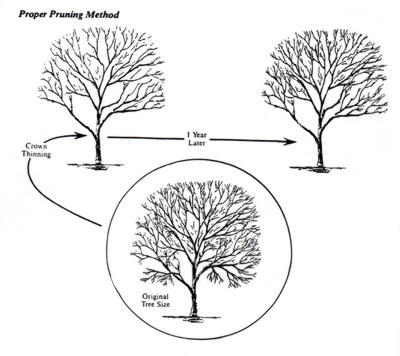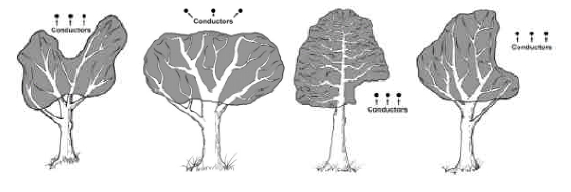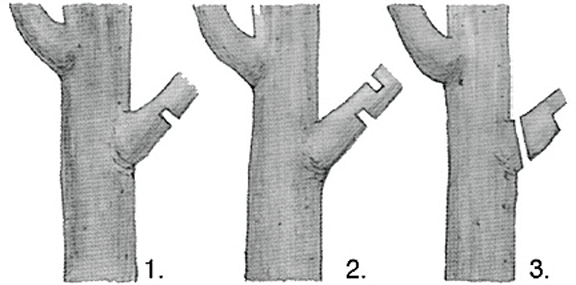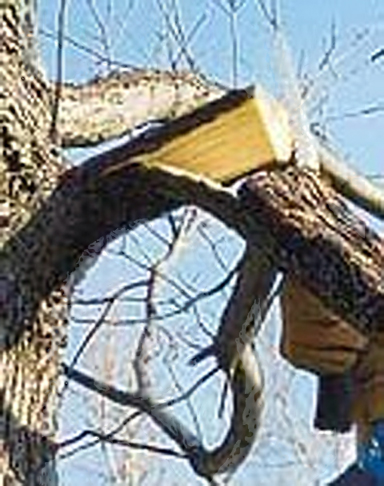Section 2: Pruning Guidelines
Anchor: #i1002220Introduction
No matter what the reason for pruning, the tree’s health and appearance should always be considered. Recognized tree surgery practices provide for pruning with a minimum of harm to a tree’s health and appearance.
All right-of-way pruning practices by TxDOT employees, contractors, or utility companies with lines on state rights of way will conform to the guidelines of ANSI A300 Part 1-2001, Tree, Shrub and Other Woody Plant Maintenance – Standard Practices (Pruning). These guidelines represent the nationally used standards by the American National Standards Institute, Inc. The guidelines set forth in this chapter conform to these new standards.
Anchor: #i1002235Aesthetic Principles
When pruning, strive to: Preserve the natural character of the tree and remove the minimum number of branches necessary to provide adequate clearance for safety or utility lines.
Trees which remain unsightly because of repeated pruning for clearance should be removed.
Figure 4-3. Proper pruning methods.
Anchor: #YWUECXWMDetermining Amount of Clearance
When pruning for safety or clearance around utility lines, consider the rate of tree growth in determining the amount to be removed from a tree. A slow growing tree will require less clearance than a fast growing tree.
Maintain adequate clearance – not excessive clearance.
Figure 4-4. Acceptable pruning practices by utility companies.
Anchor: #LPLLFRFYWhere to Cut and How to Remove a Limb
In removing a limb, the cut should be made at a fork where the remaining branch will be at least one third the diameter of the one removed. In most cases you can skip the first two steps and proceed to the last cut if the branch is less than two inches in diameter.
Use the following guidelines when cutting a limb two inches in diameter or larger:
- Anchor: #SRUMSEFO
- Pruning tools must be sharp. Anchor: #YQJONKIW
- Undercut one-third of the way through the limb, eight to 12 inches from the main stem. Anchor: #KBTSQSIR
- Remove limb four to six inches out from the first cut. Anchor: #SYYCVFTF
- Remove stub with an even cut so that the branch bark collar is still protruding. Anchor: #ADPWBWMJ
- Paint the cut with approved tree wound
paint.
Figure 4-5. The three step method in proper limb pruning.
Figure 4-6. Another illustration of proper limb pruning.
Figure 4-7. What happens when the guidelines are not followed.
Disposal of Cuttings
All pruned wood and brush must be removed from the right of way and disposed of in accordance with the laws and regulations of the community, county and state.
Diseased branches (especially those infected with oak wilt) must be properly disposed of to prevent the further spread of the disease. (See Section 3, Oak Wilt, for more information.)




